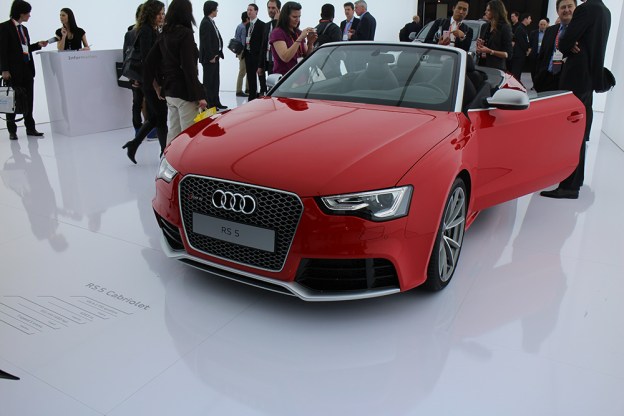
At the 2013 International Consumer Electronics Show, Audi discussed a number of new technologies that will soon make their way into production vehicles, including new LED tail and headlights, upgraded wireless connectivity, and updates to its existing MMI infotainment system.
Next generation MMI systems will add Navigation Plus, which builds upon Audi’s already stellar Google Earth satellite/navigation integration by incorporating Google Street View photos. In addition to looking super sleek, Google Street view allows drivers to “see” their destination before setting out. Additionally, the latest version of Audi connect provides more real-time data than before. Users can access concert times and flights schedules, as well as have a number of alerts from their smartphone read loud, like Twitter feeds, emails, text messages, and Facebook alerts.

Audi will also change the way in which drivers interact with their infotainment interface by introducing a new version of MMI Touch in the 2013 Audi A3. This new version features a knob system; drivers can use the knob to scroll through menus and press down on to make selections. Atop the knob is a touchpad that drivers can use to draw out specific letters and numbers. A version of MMI Touch is already available in the A6, A7, and A8, though the current system doesn’t features a separate touchpad and rotary knob interface.
Human machine interfaces, like Audi’s MMI, continue to struggle to replicate natural and intuitive controls while driving. Audi says its new system, however, is both ergonomic and easy to use.
Two dimensions? Why not three? Audi announced future A3 models will get a new 3D display for its MMI. According to Audi, the display weighs about 0.11 pounds and is merely 0.43-inch thick. The display will utilize special lenses to create images for both the left and right eye, while a camera actively adjusts the display to create a 3D image.
Because connectivity is becoming more and more a focal point for cars, access to fast and reliable wireless networks is paramount. Currently, Audi partners with T-Mobile for in-vehicle Internet access, allowing drivers to establish multiple wireless connections while on the go. Within in the next year, however, Audi plans on upgrading all its cars to LTE wireless networks, which should allow for faster data downloads than the 3G connections currently used.

Dynamic LED lights have long been the cornerstone of Audi’s alluring aesthetic and it seems the company is looking to build on that with new Matrix LED headlights. Unlike standard LEDs, Matrix LEDs consist of a large number of small LEDs that can be dimmed or turned off entirely – all automatically. Audi plans for its Matrix LEDs to work in conjunction with forward-facing cameras. The idea here is for the cameras to assess driving conditions automatically. The camera could detect oncoming vehicle, for example, and dim sections of its LEDs that might blind oncoming drivers, while also keeping the road well-lit for optimal and safer fields of vision. The navigation system will also be able to detect upcoming turns in the road and get in on the action by adjusting headlight projection around corners.

Rather than some archaic bumper sticker vulgarly encouraging drivers to keep their distance, Audi will look to special laser systems designed to aid drivers follow more safely. Despite weather conditions like rain, mist, and fog, a red warning triangle will project behind the vehicle, proving a better, less sinister use of laser technology.
Editors' Recommendations
- Audi’s new A3 Sedan learns a few tech tricks from its bigger siblings
- 2020 Audi E-Tron Sportback, RS Q8 confirmed for 2019 LA Auto Show


